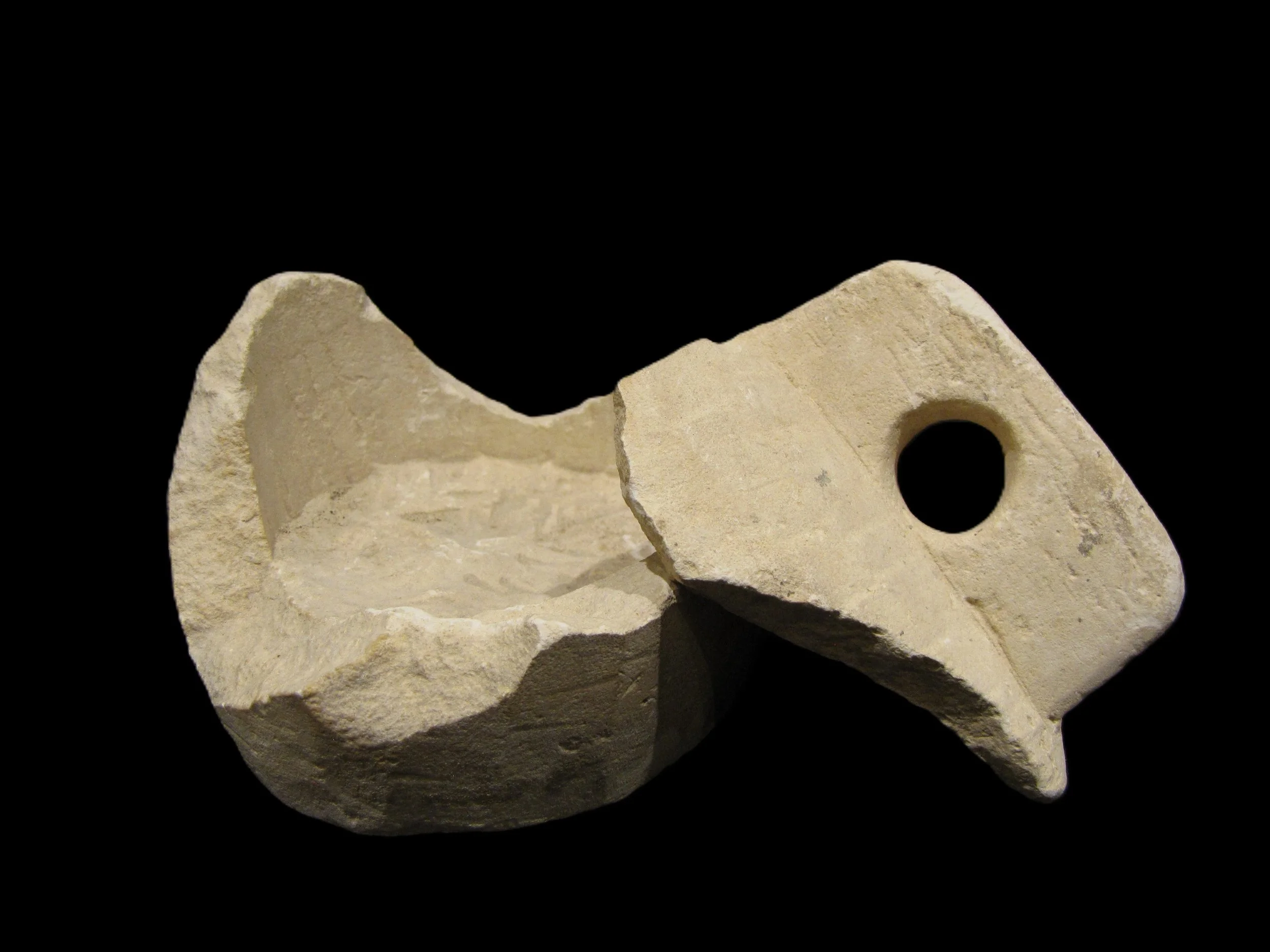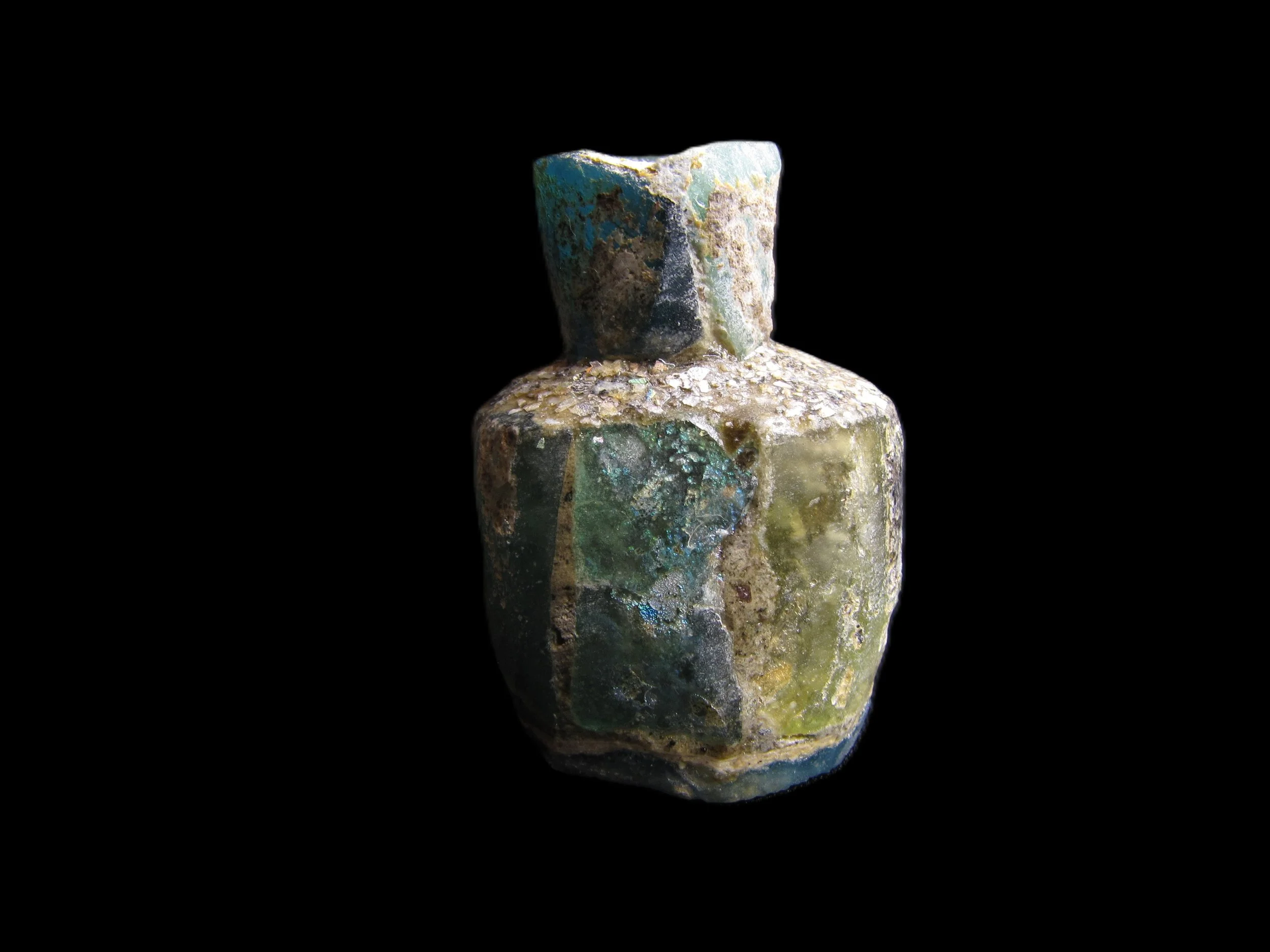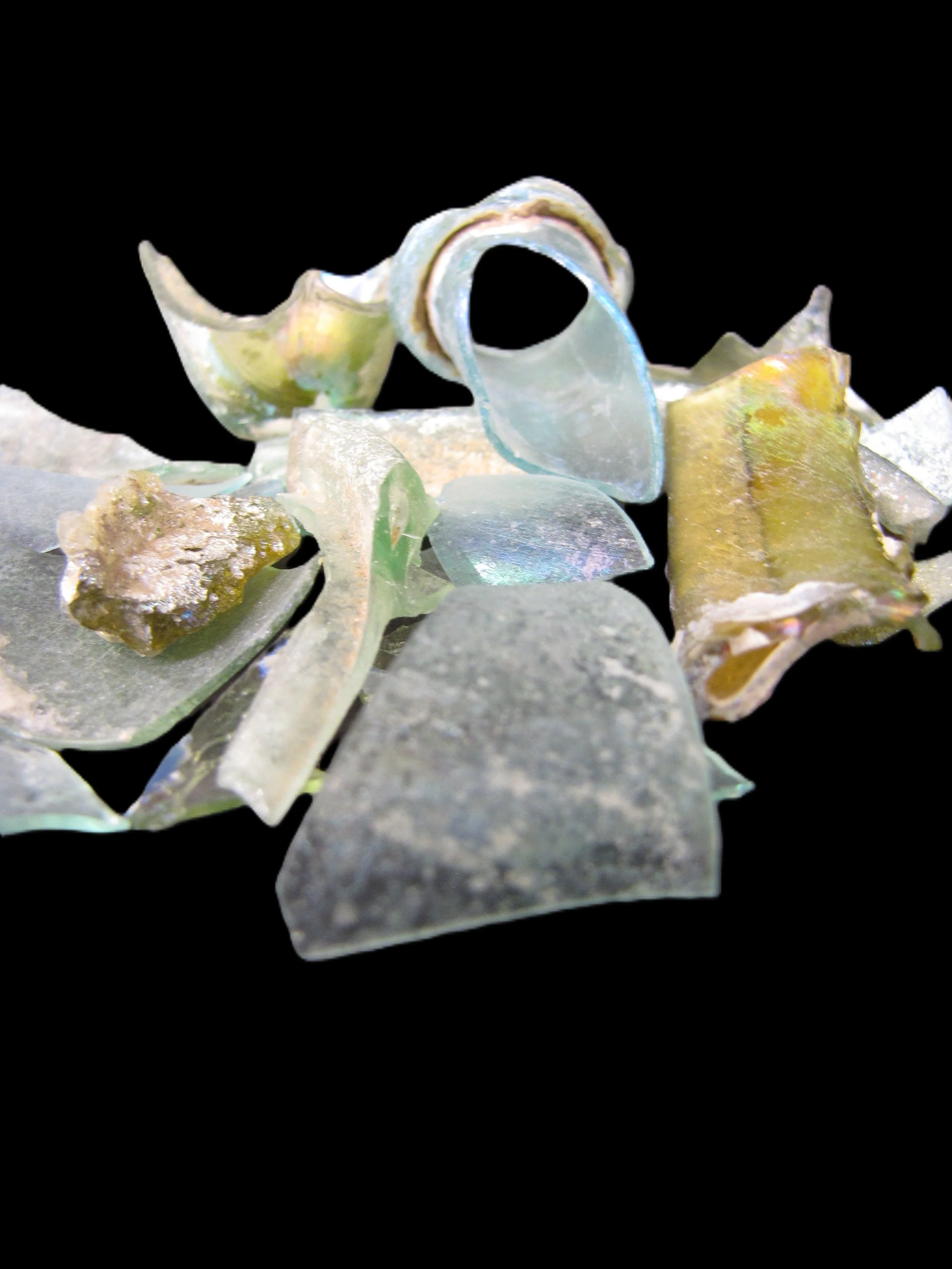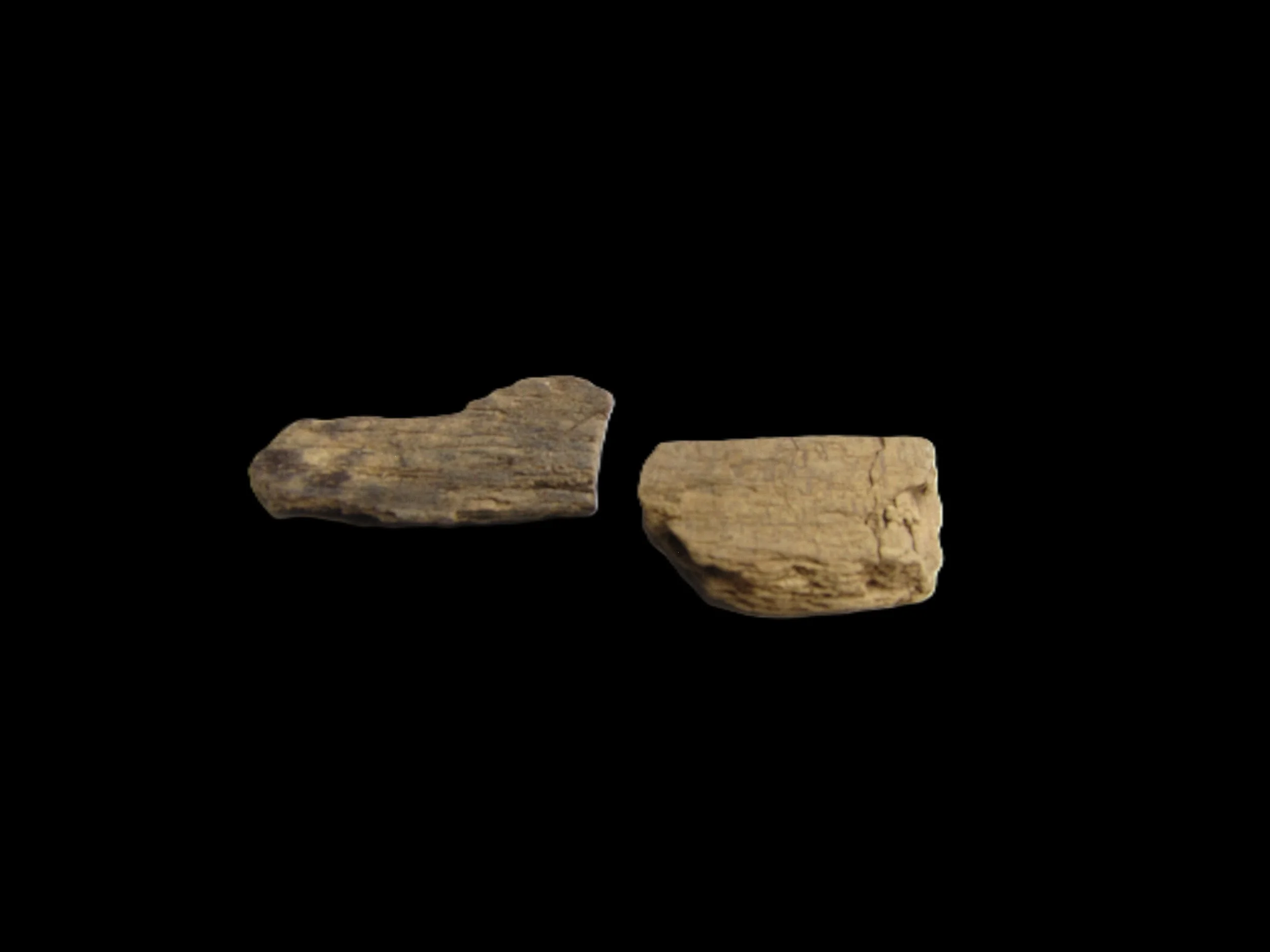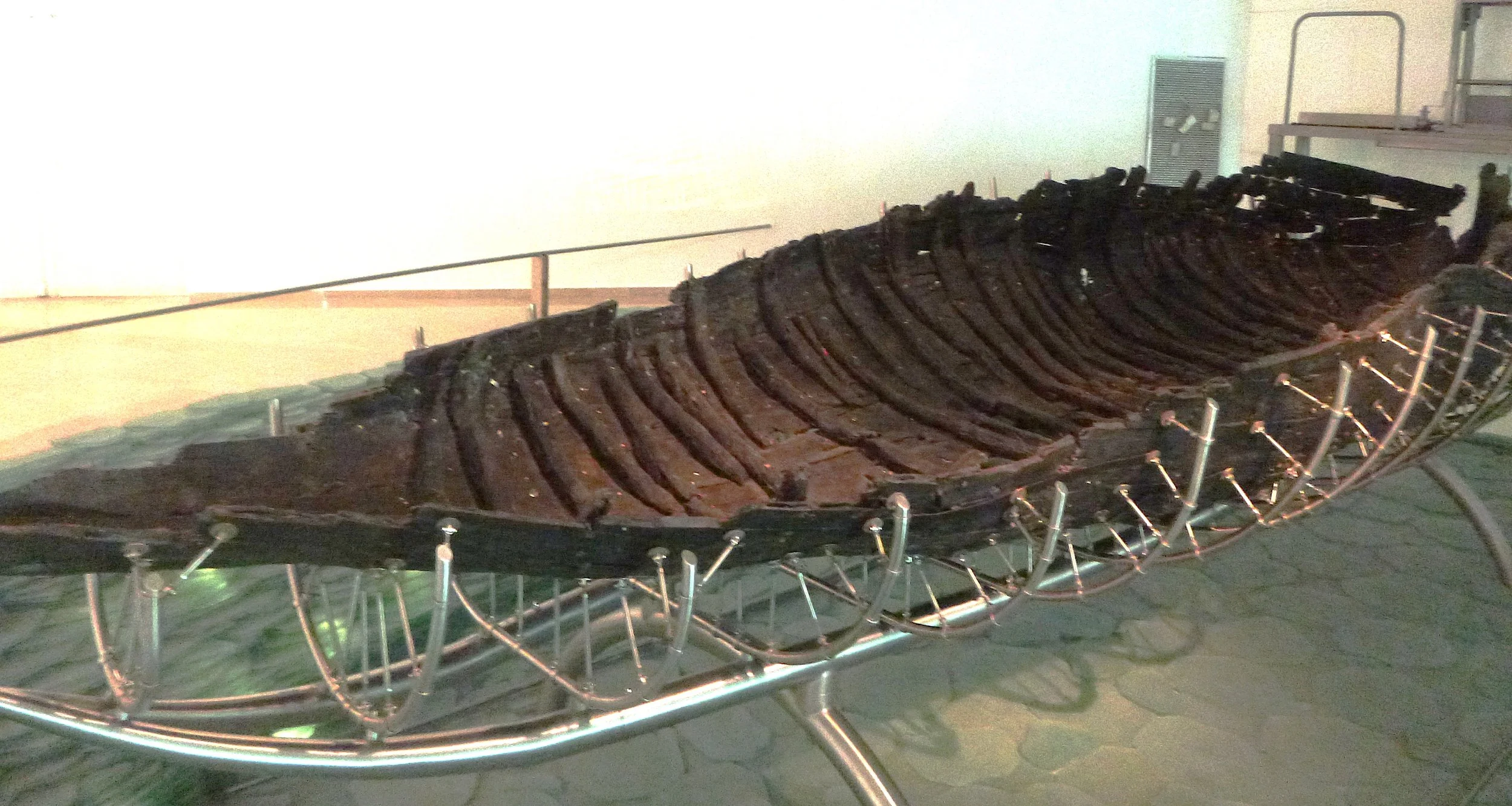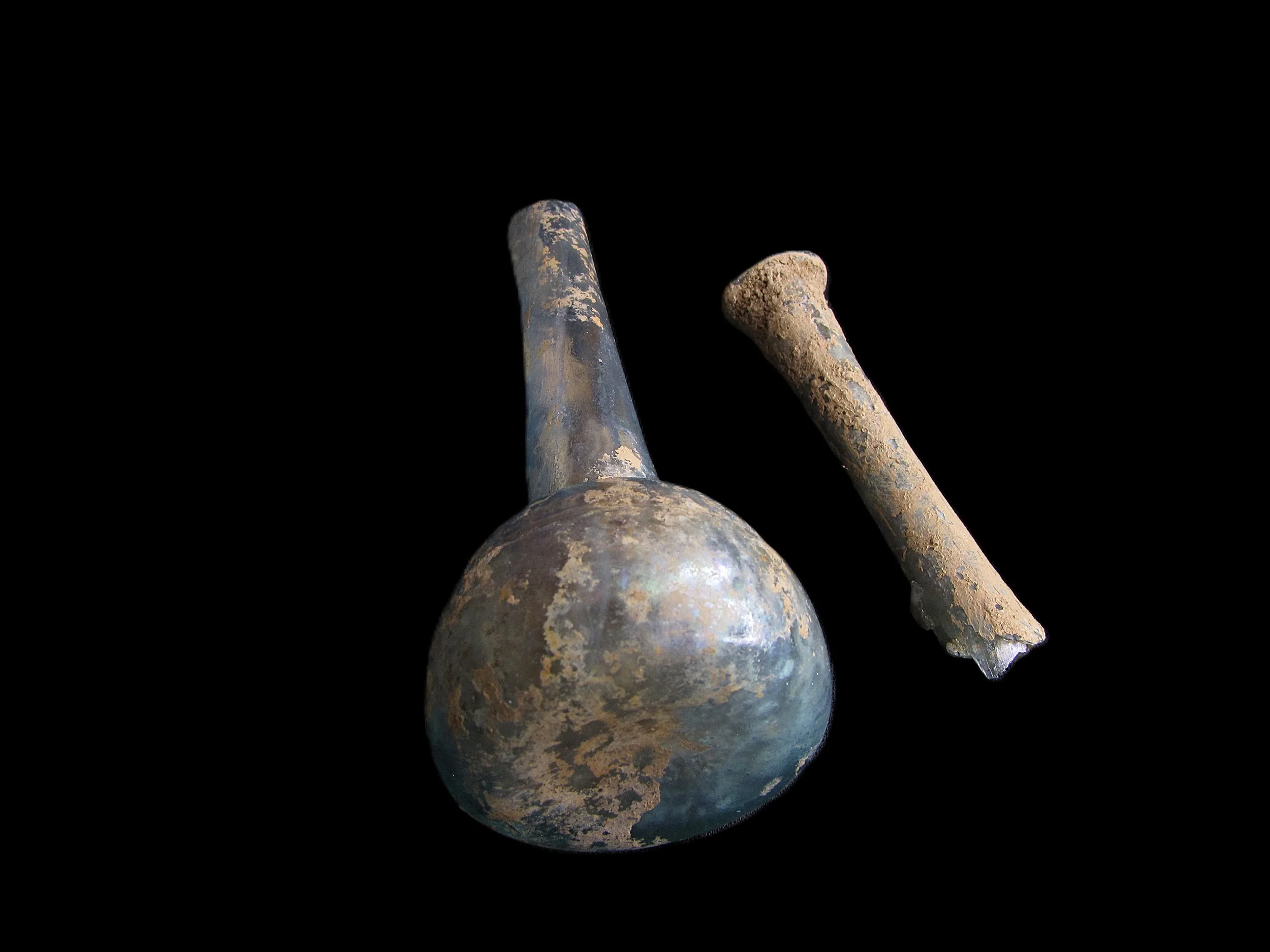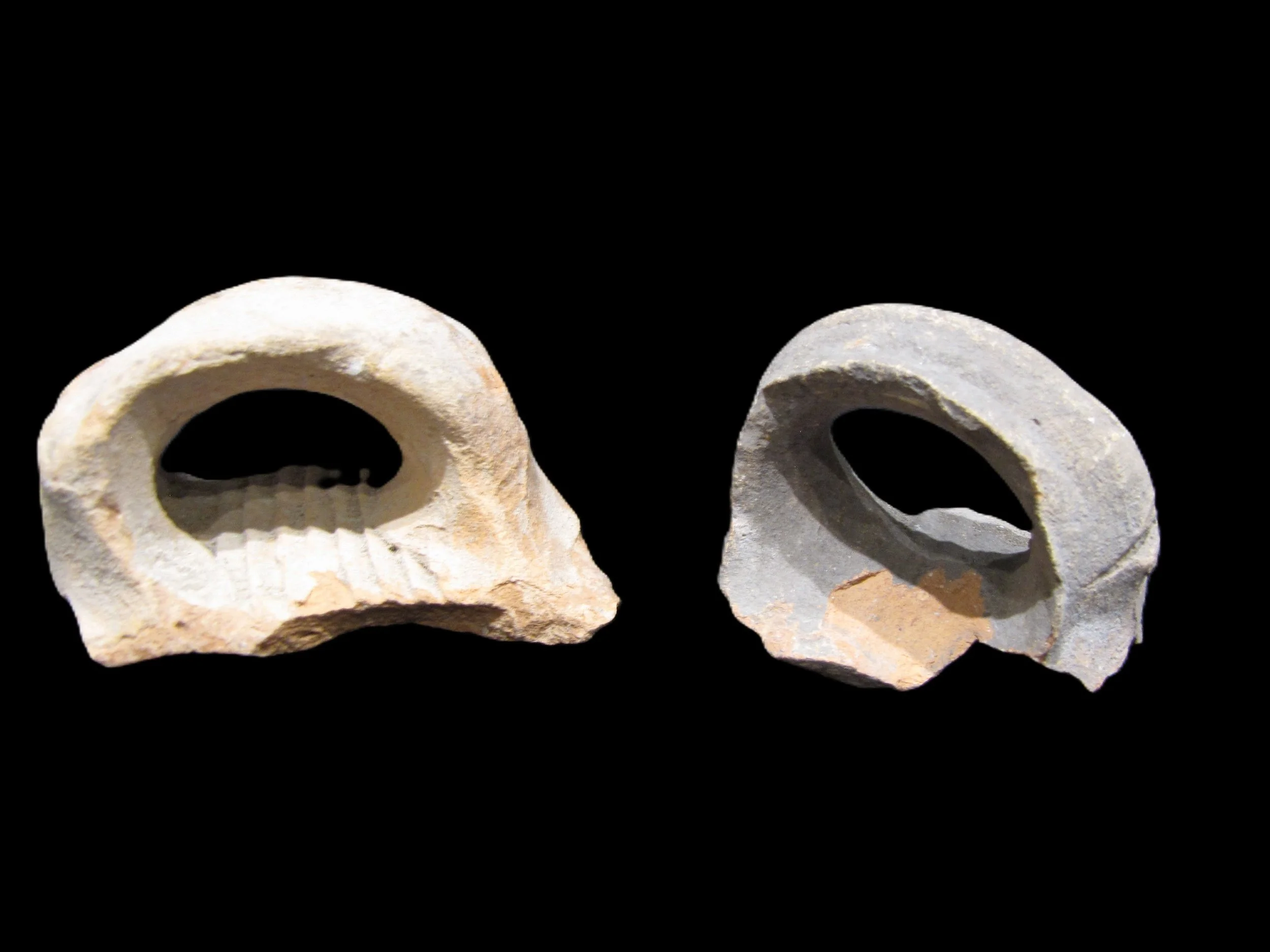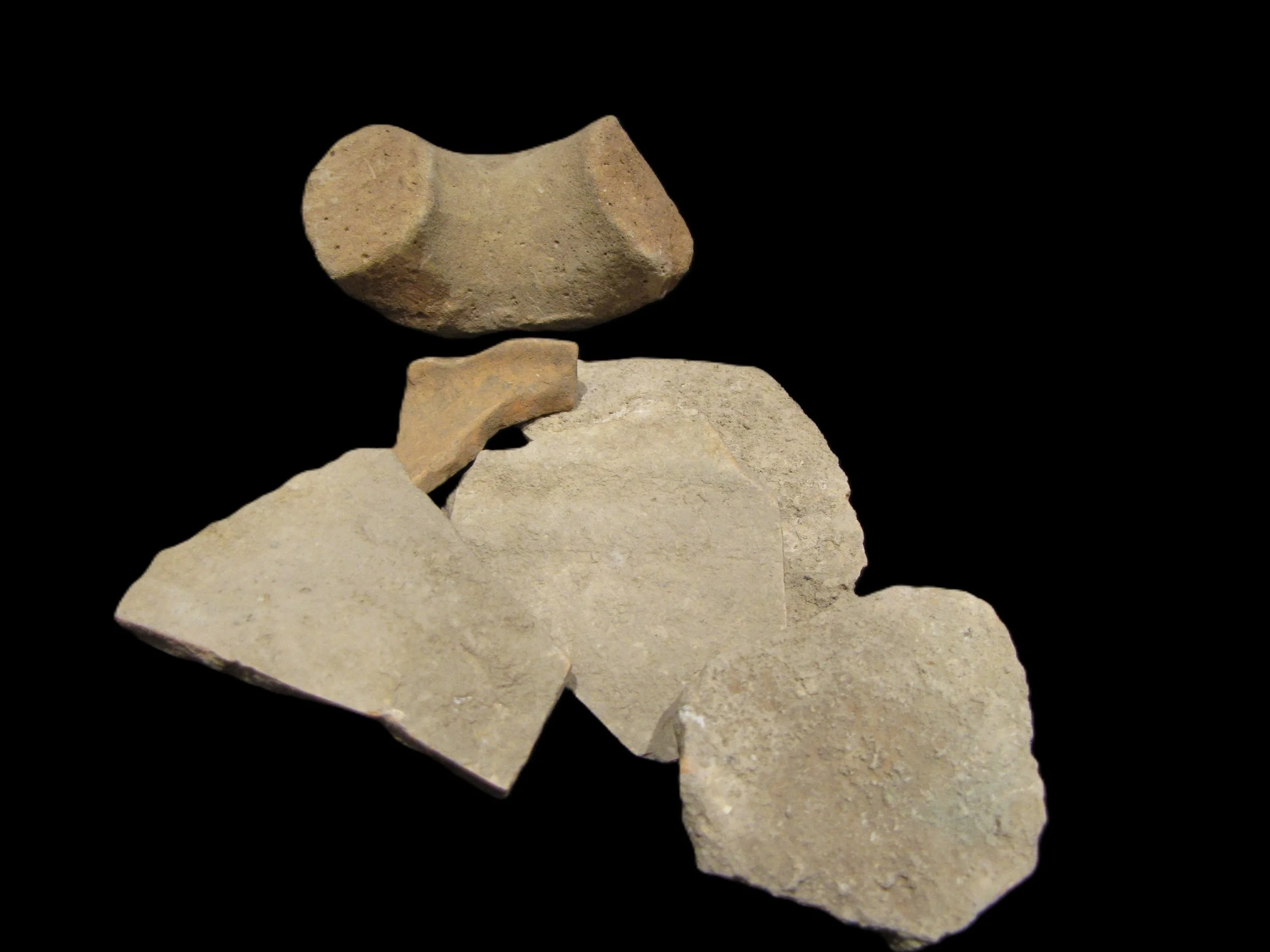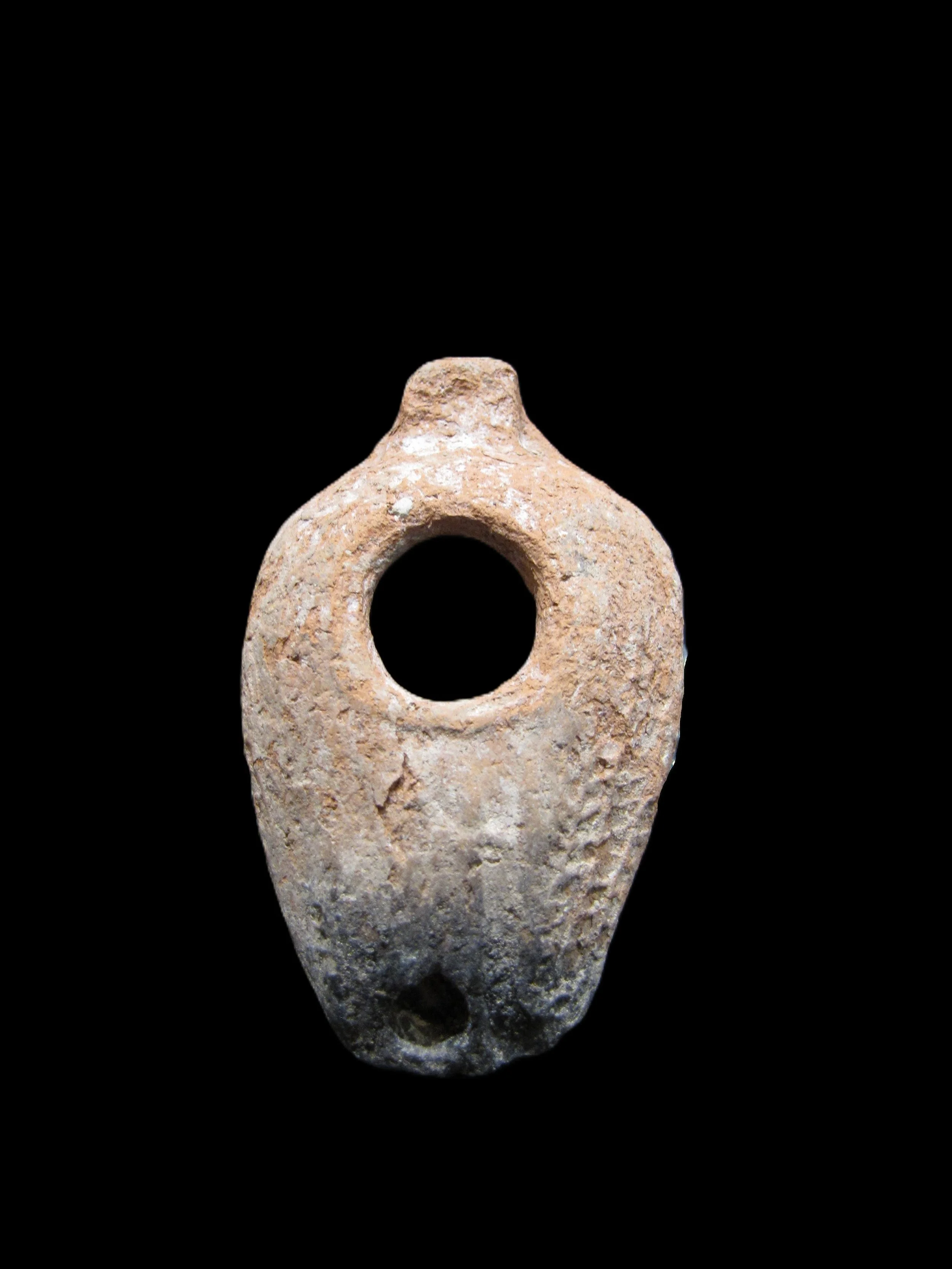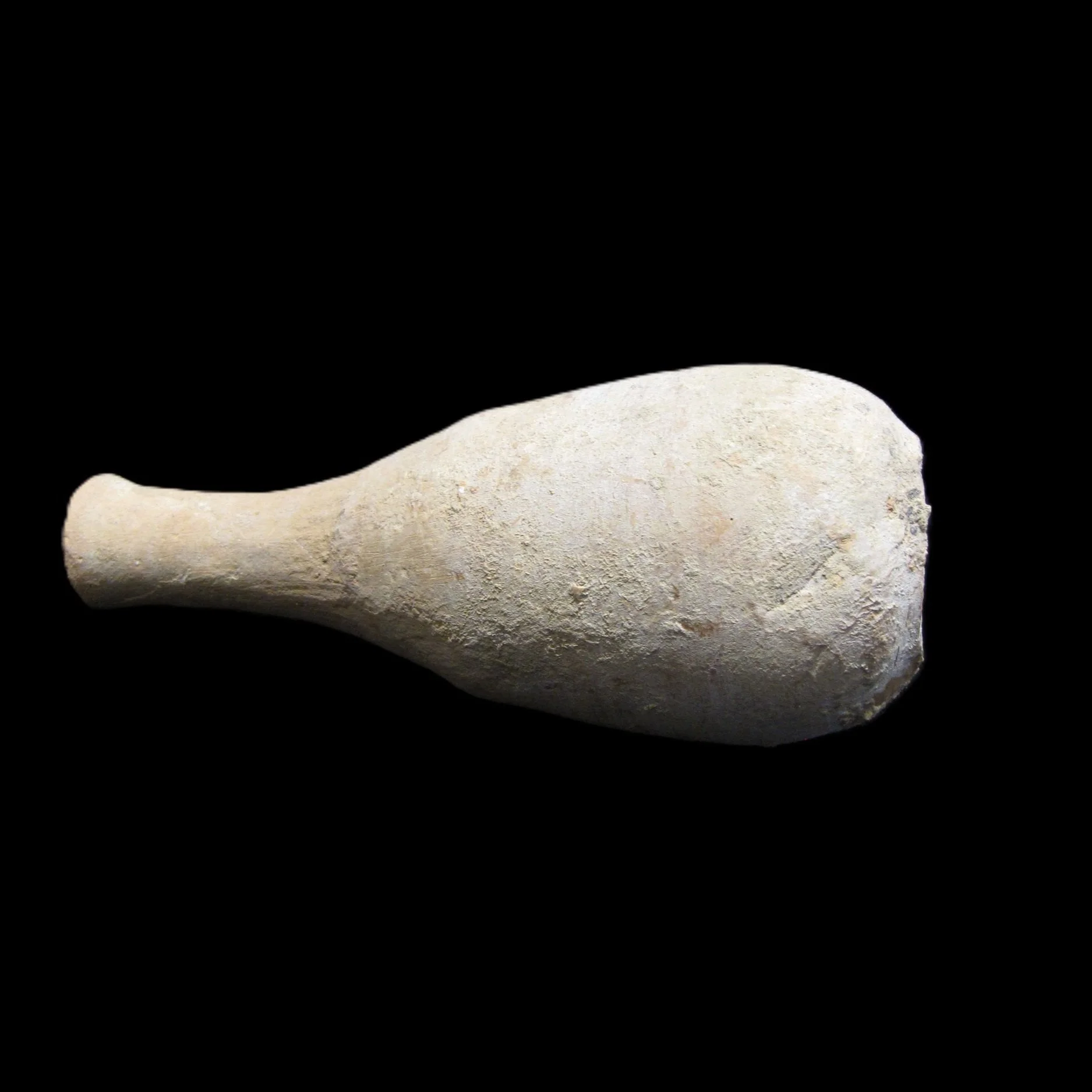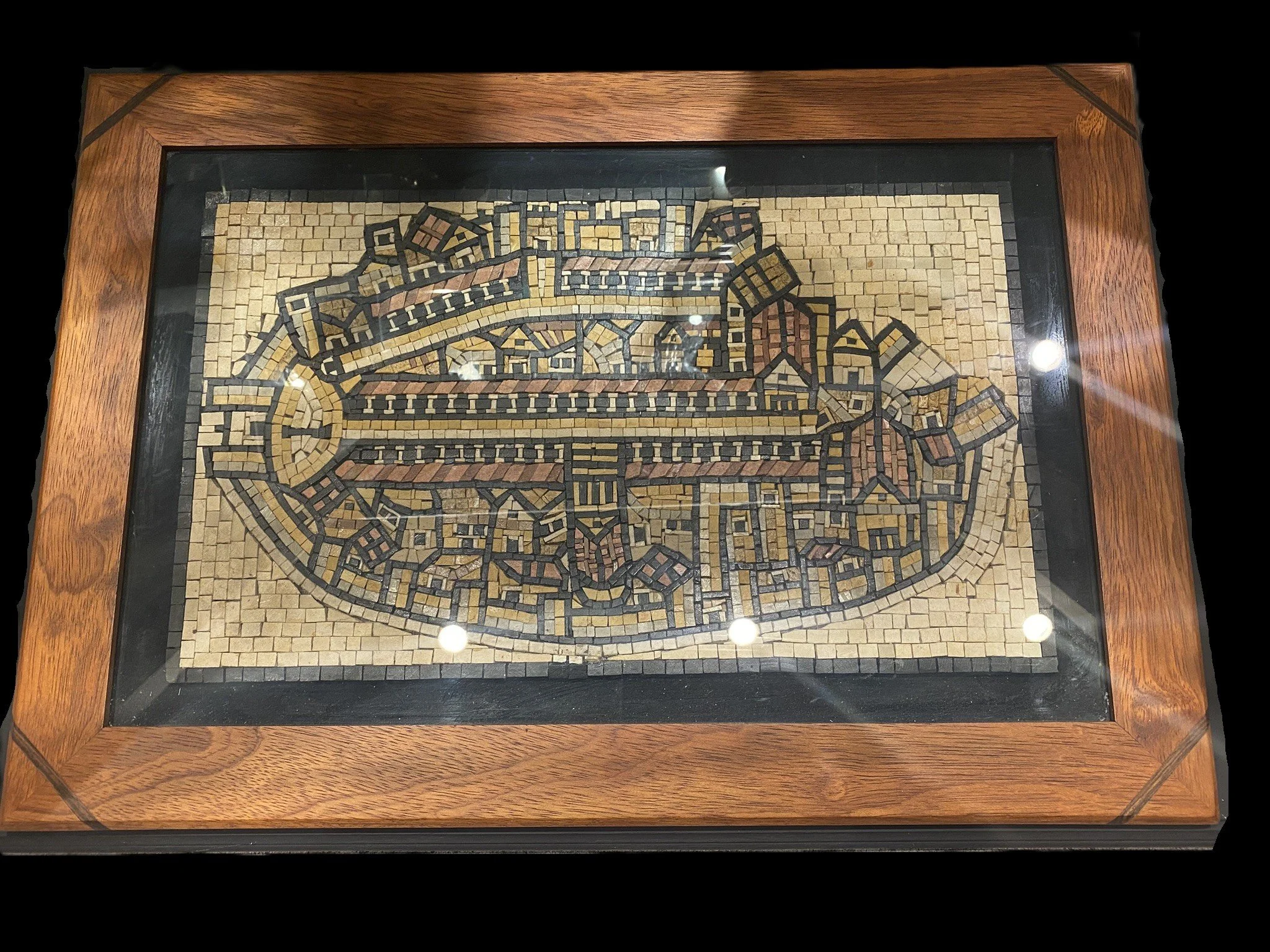Type: Priestly Stone Mug
Age: 100 BC-70AD
Culture: Roman Judea
Excevated: Archalaus Palace (east of Jericho)
Dating back 2000 years, these were common stone mugs used in Jewish households of the time. Such stone mugs were popular among Jews thanks to the purity rules. According to tradition, a pottery cup that had been contaminated by contact with a forbidden food had to be broken and discarded, but, according to the Jewish law, stone cannot become ritually impure. Jerusalem was a Center for the production of these stone vessels, crafted from a soft, chalky rock common to the region.
It is also believed that these stone vessels were used by the priests. Due to the same purity laws.
Type: Priestly Mixing Cup
Age: 100 BCE-70 CE
Era: Roman
Culture: Roman Judea
Excavated: Jerusalem
Reference: Yadin, Y. (1966) Masada Herod's Fortress and the Zealot's Last Stand. Photo on pg. 153.
Ritual Purity was of the utmost importance to the Priestly class of the Jewish Second Temple period. Since metal and pottery could be deemed impure, but stone could not (according to the Levitical Law), the temple priests and ascetics would utilize stoneware. This cup is unfinished, as are most of the others excavated thus far. The unfinished nature is likely due to the onset of the Jewish War against Rome in 70 C.E. Chisel marks are still clearly seen on the unfinished surfaces.
Type: Glass Bottle
Date: 100-300 AD
Ear: Roman
This small Roman glass perfume bottle was found in Israel.
Type: Partial Roman Perfume Bottle
Age: 100 BC-400 AD
Era: Roman
Excavated: Beth-Shan
This perfume bottle was found in the ruins of Beth-shan, a city in the territory of Issachar assigned to Manasseh. ‘The Canaanites had not been driven out (Joshua 17:11, Judges 1:27), but in the strength they were put to task-work (Judges 1:28). The most famous episode in the Bible, featuring Beth-Shean (Beth-shan), follows the death of King Saul on Mt. Gilboa: The Philistines came to strip the slain, and they found Saul and his three sons laying on Mt. Gilboa. They cut off his head and stripped him of his armor…they places his armor in the temple of Astaroth, and they impaled his body on the wall of Beth Shean. When the men of Jabesh-Gilead heard about what the Philistines had done to Saul, all their stalwart men set out and marched all night to Beth Shean. They removed the bodies of Saul and his sons from the wall and came to Jabesh and burned them there, then they took the bones and buried them under the tamarisk tree in Jabesh, and fasted for seven days (1 Samuel 31:9-13; cf. 1 Chronicles 10:8-12). Beth Shean is represented by the modern Beisan, in the throat of the Vale of Jezreel where it falls into the Jordan Valley, on the southern side of the stream from Ain Jalud. The ruins of the ancient city are found on the plain, and on the great mound where the citadel probably stood. Between the town, and the stretch of marsh land to the south, runs an old road from east to west up the Vale of Jezreel, uniting in Esdraelon with the great caravan road from north to south. Multiple excavations at Beth Shean in the past century have revealed a 6,000-year history of settlement at the site. Located near the intersection of two well-traveled ancient routes, Beth Shean had strategic value as early as the fifth millennium BC, when it was first settled. Civilizations rose and fell at the site throughout the Chalcolithic period and Bronze Age. Some of the most impressive finds at Beth Shean came form the Late Bronze Age, when Egyptian Pharaohs ruled much of Canaan and used Beth Shean as a crucial administrative center to rule over its vassal kingdoms.
This glass was also found at Beth Shean Israel.
The Roman Cardo of Scythopolis with the mound where Bet Shean is located.
The small boat is a replica of a vessel recovered from the Sea of Galilee. The two little pieces are from the boat itself (given by Karen Sullivan who worked on the boat in 1987). In the winter of 1986, a drought brought the Sea of Galilee to its lowest level in modern memory. Well at its lowest, local residents discovered an ancient boat outline in the muddy lakebed. Archaeologist called to examine the still unexcavated vessel, announced it was the first ancient ship ever found in the Sea of Galilee. They suggested it was built and used between 100 BC and 100 AD, the time of Jesus. The boat is 26 1/2 feet long, 7 1/2 feet wide, and 4 1/2 feet high. It was probably one of the Sea of Galilee's largest class of ships. Evidence of repeated repairs suggested the boat had a long life. The boat is large enough to hold 13 men. It may have been used at the same time Jesus sailed on the lake. He may have even seen it. There is no proof that this boat was ever actually used by Jesus or any of the disciples. But who knows?
Type: Relic of the True Cross of Jesus
Age 300 AD
Era: Byzantine
The most precious relic preserved by the Byzantine Church was the “True Cross”, claimed to be the actual cross on which Jesus Christ was crucified. Discovered in the 320s, the Cross had been venerated by generations of pilgrims by the seventh century. IN 614 AD the Persians invaded the Byzantine East. They took Jerusalem, looting the pillaging the pilgrimage sites and carried away the Cross to Ctesiphon (the imperial capital of the Parthian Empire). The Cross remained in Persian hands for fourteen years. In 628 AD the Emeror Heraclius defeated the Persian military, recovered what they had lost, and returned the Cross to its place of honor in Jerusalem. The Cross remained in Jerusalem for another five centuries. Used as a standard in battle by the Crusaders, it was captured at ‘Horns of Hattin’' just outside of the Sea of Galilee in 1187 by the Muslims and was taken to the Great Mosque in Cairo, where it was placed under the entrance so the Muslim worshipers walked over it on their way to prayers. When the Cross was returned to Jerusalem from Persia in 630 AD, these tokens were issued as souvenirs of celebrations. They are small clay or terra-cotta “medallions,” made by pressing a lump of clay into a (probably wooden) mold. Itis said that a small piece of the Cross was burned and the ash mixed with the clay. There are two types of tokens here, the first is Type-1-Showing Constantine in imperial robes on the left side and Helena in robes and widows veil on the right kneeling before the Cross. The Second type, which shows a Greek cross with the letters HNEI in the angles, reading “behold the appearance (of the Cross).”
Type: Roman Glass (Tear Bottles)
Age: 100 BC-100 AD
Era: Roman
Excavated: Jerusalem
Psalm 56:8 (KJV) references collecting tears in a bottle when David prays to God, “Thou tellest my wanderings, put though my tears in Thy bottle; are they not in Thy Book?” The reference predates the birth of Christ by over 1000 years. Tear bottles were fairly common in Roman times, around the time of Christ, when mourners filled small glass bottles or cups with tears and placed them in burial tombs as symbols of respect. Sometimes women were even paid to cry into these vessels, as they walked along the mourning procession. Those crying the loudest ad producing the most tears received the most compensation (so the legend goes). The more anguish and tears produced, the more important and valued the deceased person was perceived to be. These tear bottles all come from Jerusalem.
Type: Roman Pugio (Dagger)
Age: 1st Century CE
Era: Roman
Culture: Roman
Excavated: "Central Europe" likely Roman Germania
Although corroded from being in the ground of central Europe for 2000 years, this is a decent example of a Roman Pugio (dagger).
Type: Replica Sicarii
Culture: Replica of a Sicarii (Dagger) used by the Sicarii in their war against Rome in 66-73 AD.
Produced by: Charles Fausett
As noted in other sections (see the Jewish Revolt coins), war broke out between the Jews and Rome in 66 CE. Somehow, the Roman political class gained influence over the Jewish religious system, including choosing the High Priest. A group of zealots lit the fire of rebellion and, ultimately, Rome’s response, as detailed by Flavius Josephus. After the Galilee fell, Rome marched on Jerusalem which was destroyed in 70 CE. Masada was the last hope for the Jewish rebels. Masada was the desert fortress started by Johnathan (of the Maccabean era), and later fortified by Herod as a secure retreat for him and his family. It now became the last secure retreat, or so thy thought, for the Rebels. 73CE saw the end of the Jewish rebellion and the fall of Masada via siege and suicide.
Type: Thrust Spear Head
Age: 1st-3rd Century CE
Era: Roman
Culture: Roman
Excavated: Unknown
The Roman's had different types of spears; however, the two most common are the pilum and thrust spear. Josephus writes that those soldiers wielding the Pilum (javelin) were stationed towards the back of the rank. On cue, they would throw their pilum at the oncoming army. The head of the pilum was designed to do two things, penetrate what it hit and bend. It was strong enough to stick into a shield, and once it bent, the shield would be nearly impossible to carry into battle.
The thrust spear, pictured above, was carried by soldiers about three rows back. As such, these spears would extend out beyond the first line of soldiers. As they moved towards the oncoming army, these spears would serve as a second line of offense after the Pilum that was thrown from many yards away.
Type: Arrow Head
Age: 1st-3rd Century CE
Era: Roman
Culture: Roman
Excavated: Unknown
This arrow head is example of the trilobite style.
Type: Sauroter/Butt-Spike
Age: During Roman Era
Era: Roman Era
Culture: Roman
Excavated: Unknown
The souroter (lizard killer) spike would be adhered to the butt end of a spear, making both ends deadly.
Type: Roman Jar Handles
Age: 100 BC-100 AD
These pottery handles were found in an excavation at Caesarea in early 2000. Both date to the time of Jesus and the Apostles.
Type: Pottery
Age: 100 BC- 100 AD
Era: Roman Era
Excavated: Jerusalem
This pottery comes from the excavation of Pilate’s Judgment Seat where Jesus stood before the crowds and Pilate asked the crowd, “Which of the two do you want me to release to you?” They said “Barabbas!” (Matthew 27:21).
Type: Roman Medical Instruments
Age: 1st-3rd Century CE
Era: Roman
Culture: Roman
Excavated: There are three sets here, one excavated in Israel, another in Jordan, and the third excavation site is unknown.
Type: Oil Lamps
Age: 100 BC-300 AD
Era: Roman
These oil lamps date from the time of the destruction of the Temple to the beginning of the rule of Emperor Constantine The Great and to the fall of the Roman Empire. Ancient oil lamps have soot around the spout and many of the pear-shaped lamps from the Byzantine Empire had Christian symbols, such as the cross, on them.
Type: Pottery Perfume Bottle
Age: 100 BC-100 AD
Era: Roman
This small perfume bottle was found in a dig around the old city of Jerusalem. It is of the age and type used in the days of Jesus.
Type: Roman Defixio (Tabella Defixionis)
Age: 1st-3rd Century CE
Era: Roman
Culture: Roman (Roman Emboricum)
Excavated: Roman Emboricum
Purchased: York Antiquities: Yorkshire England
These small lead tablets, called a defixio, were used in religious rituals. Inside of the folded lead would be writing, typically scratched in with a stylus. Most often the writing contained a curse or prayer.
Although this one is from the Roman era, in 2019, a very important defixio was found on Mt. Ebal, Israel. The Ebal defixio has been associated with the alter built by Joshua, just after the Exodus. You can read the scientific article about the Ebal defixio at by clicking below.
Mt. Ebal Defixio Article
Type: Roman Weights (for measuring product)
Age: 1st-3rd Century CE
Era: Roman
Culture: Roman
Excavated: Unknown
Have you ever wondered why the abbreviation of pound is lb? The ancient Roman equivalent of a pound was called a Libra, which abbreviated is lb. Can you guess the western equivalent to the ancient Roman Uncia? If you guessed ounce, you would be correct. Sorry, there is no prize...or participation trophies for this game show.
Just as today, when people went shopping they would need a specific amount of a product. These weights were used as counter balances to determine how much product was on the scale.
Throughout the Bible we read about dishonest merchants who would use deceptive weights and measures to rip off the people.
Hear this, you who trample the needy, to do away with the humble of the land, 5 saying,
“When will the new moon be over,
So that we may sell grain,
And the sabbath, that we may open the wheat market,
To make the bushel smaller and the shekel bigger,
And to cheat with dishonest scales,
6 So as to buy the helpless for money
And the needy for a pair of sandals,
And that we may sell the refuse of the wheat?”
Amos 8:4-6
Type: Replica of the Medeba Map
The modern Arab village of Medeba (Madaba) is built on the ruins of biblical Medeba. During construction of the Church of Saint George, the beautiful “Madaba Map” was found. This map was originally part of the floor of a Byzantine church, built during the reign of emperor Justinian, 527-565 AD. It is the oldest map of the Holy Land in existence. The map is in the center of the modern church. At a length of 34 1/2 feet long and 16 1/2 feet wide, only about 1/3 of the original map still exists. The walls are visible around the big cities, including Jerusalem, Jericho, and Ashdod. Jerusalem is the focus of the map. Clearly visible are the north-south cardo and valley streets (lined with columns), the Damascus Gate Plaza and pillar, the city walls, the Church of the Holy Sepulcher, the Church of Holy Zion (Hagia Sion), and Justinian’s “Nea” Church.
